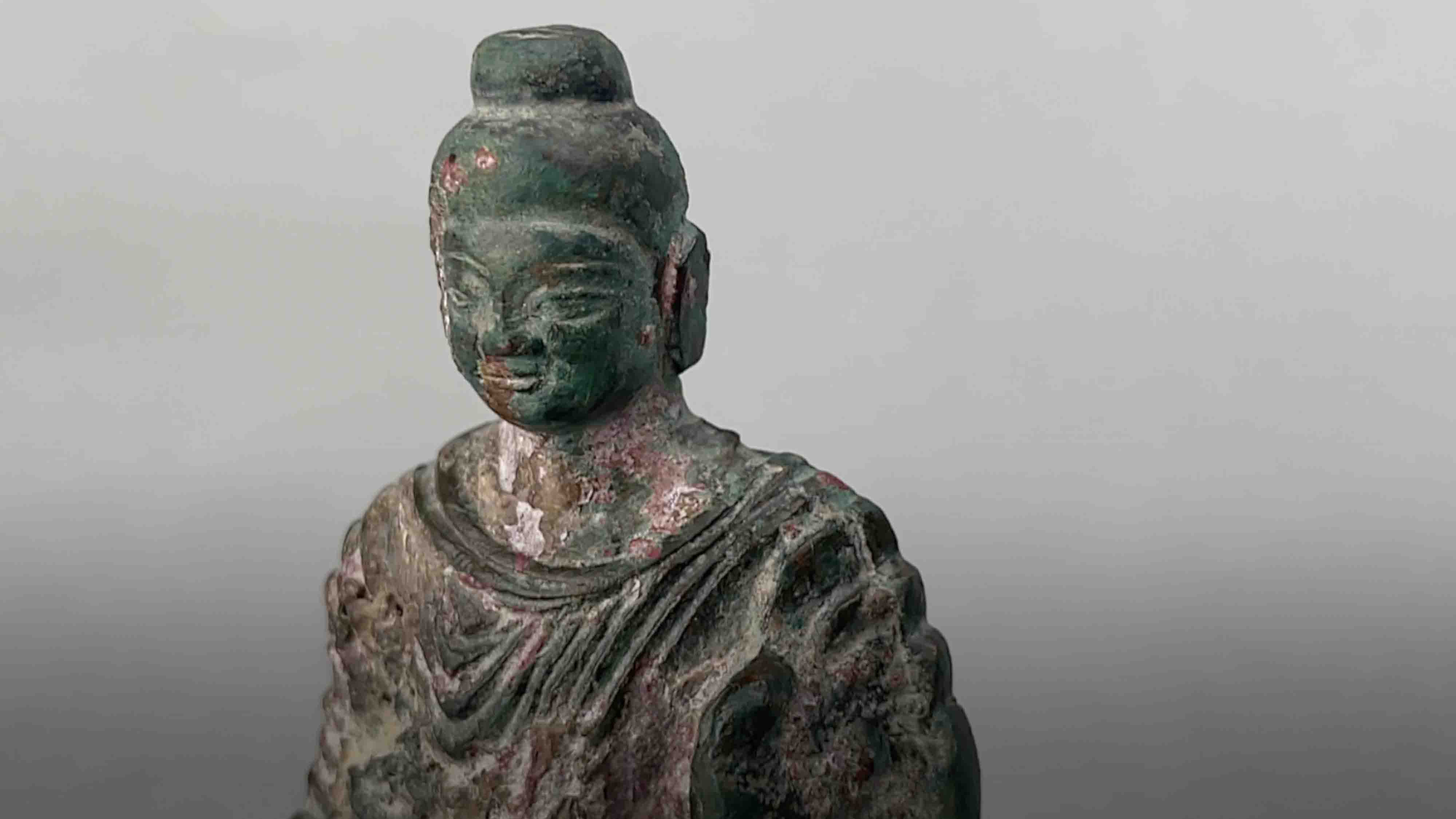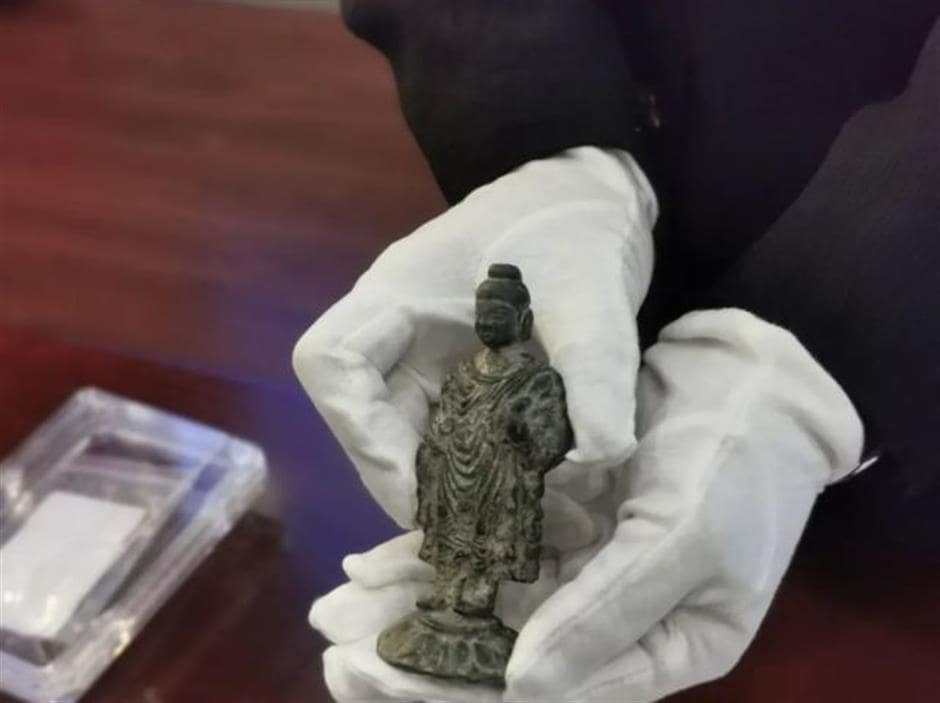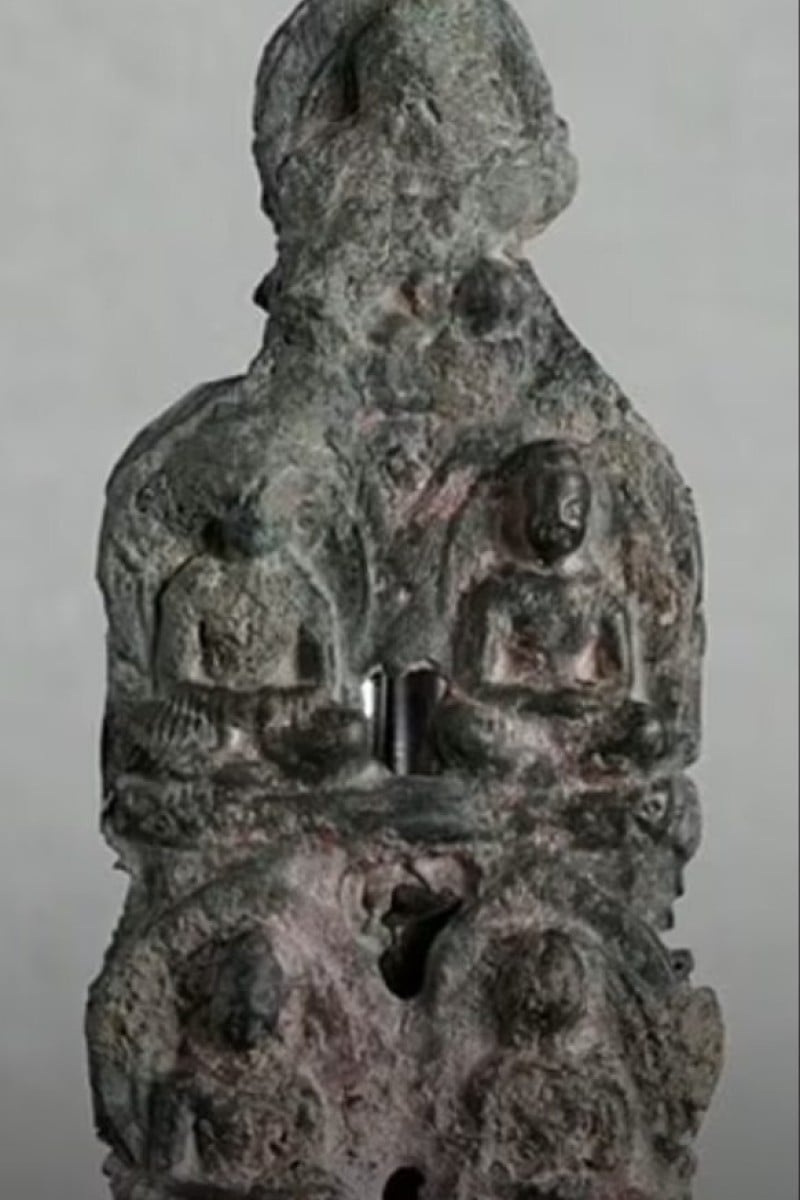In a significant archaeological breakthrough, researchers have uncovered the earliest known Buddha statues in China. Unearthed in the northwestern Shaanxi Province, these statues date back to the Eastern Han Dynasty (25-220 AD), offering new insights into the early introduction and localization of Buddhism in China. This discovery sheds light on the early presence of Buddhist artifacts in China, revealing more about the region’s historical and cultural exchanges.
Discovery and Excavation

In May of this year, archaeologists from the Shaanxi Academy of Archaeology excavated six ancient tombs in Chengren Village, Xianyang City. Among the findings were two copper-tin-lead alloy Buddha statues, marking the earliest such artifacts discovered in China. The tombs date back to the Eastern Han Dynasty, a period crucial for understanding the spread of Buddhist culture in China.
The excavation revealed a total of two Buddha statues and various other items. One statue represents Sakyamuni, the historical Buddha, while the other depicts the Five Tathāgatas, significant figures in Mahayana Buddhism. These statues are notable for their Gandhara style, indicating that while they were produced locally, they were influenced by the Buddhist art traditions of the Gandhara region, which encompasses parts of modern-day Pakistan and Afghanistan.
Details of the Buddha Statues

The Sakyamuni statue measures 10.5 centimeters in height with a base diameter of 4.7 centimeters. The Five Tathāgatas statue stands 15.8 centimeters tall and has a width of 6.4 centimeters. The metal composition of both statues—copper-tin-lead alloy—has been confirmed through detailed archaeological analysis.
Li Ming, a researcher with the Shaanxi Academy of Archaeology, highlighted the significance of these findings. The statues not only represent an early form of Buddhist art in China but also provide valuable information about the local adaptation and Sinicization of Buddhist practices.
Historical Context and Significance

The excavation site, known as the Hongduyuan cemetery, is situated north of Chang’an (modern Xi’an), which was the capital of China during the Han and Tang dynasties. This cemetery is noted for its high status, with the majority of interred individuals being royal relatives, senior officials, and dignitaries. The presence of these statues in such an esteemed burial site underscores the importance of Buddhism to the elite of the time.
From June 2020 to November 2021, the Shaanxi Academy of Archaeology has conducted extensive excavations in Xianyang City, uncovering 3,648 ancient tombs. These discoveries span from the Warring States period (475-221 BC) to the Qing Dynasty (1644-1911). To date, over 16,000 cultural relics have been unearthed, providing a wealth of information about ancient Chinese civilization.
Conclusion
The discovery of the earliest Buddha statues in China from the Eastern Han Dynasty offers invaluable insights into the early spread of Buddhism in China. These findings not only highlight the significance of Shaanxi Province in the history of Buddhist art but also contribute to our understanding of the cultural and religious exchanges between ancient China and the broader Asian continent. As research continues, these artifacts will undoubtedly play a crucial role in unraveling the rich tapestry of China’s historical and cultural evolution.
